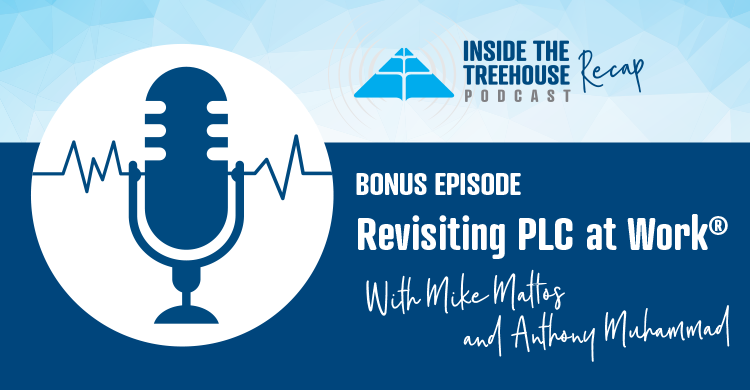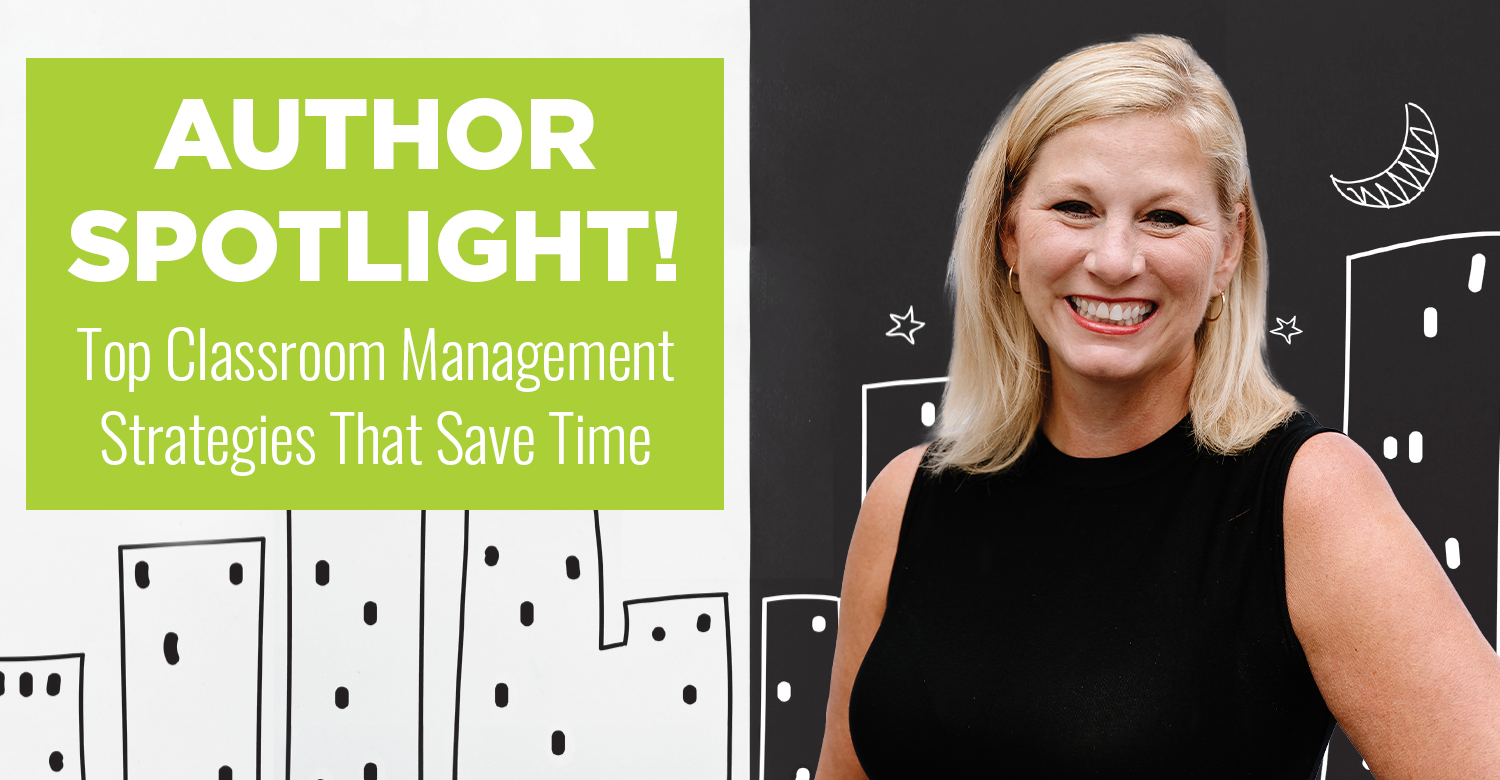For both Mike Mattos and Anthony Muhammad, discovering the PLC at Work® process completely changed how they view education. Now, years later, they’re not just believers in its transformative power—they’re proud advocates whose new book, Revisiting Professional Learning Communities at Work®, 2nd Edition, is an essential read for any educator who is serious about PLCs.
Read on to learn more about Mike and Anthony’s experience with PLC at Work®, how it differs from general PLCs, and more.
Learning by Doing
It’s generally considered that the best way to learn how to serve a profession is by being a part of that profession yourself. For that reason, all Solution Tree associates are former or current education practitioners—and Mike and Anthony are certainly no exceptions.
Anthony began his education career as a seventh-grade social studies teacher. He continued teaching middle school for eight years before becoming an assistant principal and principal. Mike, too, got his start teaching seventh- and eighth-grade social studies. In fact, he’s proud to say he spent much of his career as a classroom teacher before accepting a role as an assistant principal and then a site principal.
When they were teachers, neither Mike nor Anthony knew much about PLCs. This changed for Anthony when he reluctantly attended a Solution Tree PLC at Work® Institute in Illinois. The event changed how he viewed education. He recalls seeking out PLCs at Work®, a foundational book by PLC at Work® architects Richard DuFour and Robert Eaker, and reading it avidly. Later he would be mentored by Dr. DuFour himself and now is carrying on his legacy, something Anthony never would’ve dreamed he’d one day be part of.
Mike’s introduction to PLC at Work® was similarly eye-opening and transformed the way he thought of himself as an educator. He feels blessed to have had the opportunity to work with Dr. Eaker, Dr. DuFour, and Rebecca DuFour, and humbled to be part of the PLC at Work® legacy that began with PLCs at Work®.
Continuous Improvement
Twenty-two years after the publication of PLCs at Work®, both Mike and Anthony believe that the core message of the book is still very relevant today. The fundamental purpose of schools has been and always will be learning, and the technique that hits the heart of that purpose will never be out of style. Anthony compares the book to a tree trunk, providing a proven framework from which newer “branches” have grown and flourished.
Mike agrees and points to the idea of continuous improvement, which is fundamental to the PLC at Work® process. In the 10 years between the publication of PLCs at Work® and the first edition of Revisiting PLCs at Work®, the PLC at Work® architects continued to learn and enhance their practice, gaining greater clarity and more evidence that proves what does and doesn’t work.
Mike also notes that schools and districts who already functioned as high-performing PLCs pre-COVID-19 were the ones who most effectively adapted to the disruption caused by the pandemic. They already had a strong foundation in place and so could more easily pivot to virtual learning, proving the endurance and timelessness of the PLC at Work® process.
Accept No Substitutes
Mike and Anthony discuss the difference between PLC at Work® and general PLCs, noting that PLC at Work® is a process and a framework, not simply an activity schools or districts do. Anthony compares it to a computer’s operating system. Without an operating system, a computer’s hardware is useless. Similarly, the PLC at Work® process organizes everything your school or district does and makes it useful.
A misunderstanding Mike and Anthony sometimes see is that the collaborative team is the PLC. Schools consider the teacher team to be the fundamental unit of learning. However, collaboration alone does not meet the characteristics of a true PLC. Without the process, the school or district will lack a targeted focus on the essential needs of students, leading to no gains in achievement.
Mike and Anthony also touch on “repackaged” PLC concepts as well as “PLC Lite.” Anthony advises leaders to do due diligence and dig into the literature to discern for themselves what works and what doesn’t, not to be distracted by empty assurances or flashy new ideas. Schools and districts can’t reap the benefits of collaboration without implementing the PLC at Work® process on a deep level.
Mike and Anthony also touch on the subject of resisters. Anthony notes that resistance is a behavior and behavior is motivated. He encourages PLC leaders who are dealing with resisters to consider the root of that resistance—what systemic or cultural factors are contributing to it. Just as teachers take responsibility for student learning, so should leaders take responsibility for teachers who are not progressing. If we believe that all students can learn, we also have to believe that all educators can learn.
Revisiting PLCs at Work®
Twenty-two years after PLCs at Work® and 12 after the first edition of Revisiting PLCs at Work® were published by Solution Tree Press, the second edition of Revisiting PLCs at Work® was released in April 2021. This time Mike and Anthony add their voices and expertise to that of Richard DuFour, Rebecca DuFour, and Robert Eaker, expanding the “branches” of the PLC at Work® trunk a little further.
As the “global expert on school culture,” in Mike’s words, Anthony wound up revamping the chapter on school culture, applying his extensive hands-on experience to the theoretical groundwork laid by the PLC at Work® architects. He discusses the impact of public policy, like No Child Left Behind, on the relationships among school staff. He also examines PLCs from a sociological perspective, looking at what conditions must exist in a school before teachers can engage in meaningful collaboration and what leaders can do to foster those conditions.
As a co-creator of RTI at Work™, Mike contributes his RTI expertise to the second edition as well. A school can’t leverage the full power of the research behind RTI unless it functions as a PLC. Without a collaborative culture, a collective understanding of what kids should learn, and a process to gather consistent evidence of that learning, it’s hard to provide students with the targeted interventions they need to succeed.
Anthony often sees the PLC at Work® process break down at the third critical question: How will we respond when some students do not learn? When teachers get evidence that a student has not learned, they feel like everything falls back on their shoulders. But Mike’s work gives focus to the “we.” In the second edition of Revisiting PLCs at Work®, Mike dives deeper into the systemic response and how administrators can ensure that teachers don’t feel alone when a student doesn’t learn.
Learning for All
Mike and Anthony emphasize that the second edition of Revisiting PLCs at Work® doesn’t boast any sort of “new and improved” process. Rather, it builds on the books before it, applying updated research and further evidence and reflecting the authors’ deepened understanding of best practices. Anthony calls this new edition the definitive work on PLCs, an essential read for anyone serious about the PLC at Work® process.
Once educators have experienced what it’s like to be part of a high-performing PLC, they wonder how they ever made it without the PLC at Work® process. This is something Mike and Anthony have heard many times—and experienced themselves. They also point to the Model PLCs listed on AllThingsPLC as evidence that the PLC at Work® process leads to significant, continuous improvement.
As Anthony says, “By identifying the right labor and doing that labor together, how can you not have a good school?”






